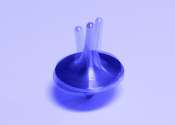Scientists 'tune in' to proton spin precession
Scientists at the U.S. Department of Energy's Brookhaven National Laboratory have developed a non-invasive way to measure the "spin tune" of polarized protons at the Relativistic Heavy Ion Collider (RHIC)—an important factor ...








